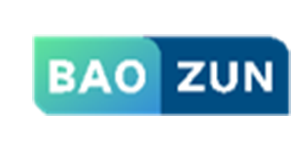宝尊电商 (09991.HK,BZUN.US) 2025年第三季度业绩电话会
文章语言:
简
繁
EN
Share
Minutes
原文
会议摘要
Effective marketing strategies, including brand ambassador collaborations and content-driven campaigns, have significantly boosted sales and brand visibility, leading to double-digit sales growth and plans for store expansion. The company anticipates leveraging these assets to further expand its customer base and improve profitability, emphasizing strategic investments and synergies between different business segments.
会议速览
The conference call, moderated by Wendy's son, provides updates on Baen's Q3 2025 earnings, including a discussion on business strategy, financials, and segment highlights. Forward-looking statements are noted, with disclaimers on risks and uncertainties. All financial figures are in RMB.
Bo delivered a strong Q3 with total revenue growth, improved profitability, and expanded gross margins. The company highlights its resilient e-commerce foundation, brand management momentum, and technology as catalysts. Initiatives include engaging a top-tier actor as China Brand Ambassador and launching themed products. Offline store expansion and impactful marketing campaigns contributed to sales and gross margin growth. Bo anticipates a shift from transformation investment to sustained profitable growth in 2026.
The dialogue covers Q3 financial results with a focus on revenue growth, particularly in eCommerce and BVM product sales, alongside improvements in profitability through gross margin expansion and cost optimization efforts. Non-GAAP operational losses significantly decreased, showcasing enhanced financial health and operational efficiency.
An investment initially categorized as redeemable noncontrolling interest, expiring in the third quarter, has been reclassified as noncontrolling interest and equity, increasing total equity from 4 billion to 5.5 billion without affecting warehouse and logistics operations. This adjustment reflects a significant accounting change impacting the financial statements but not operational aspects.
The dialogue outlines third-quarter achievements emphasizing sustainable profitability and growth through strategic adjustments in business segments, including service model shifts and AI-driven efficiency enhancements, setting a foundation for long-term value and innovation in brand empowerment.
BDM reported a 20% year-over-year revenue growth to $396 million, driven by improved operating metrics. Gross profit increased 28% to $223 million, with margin expansion and enhanced profitability. PBM's non-GAAP operating loss improved by 30% to $39 million.
Cap China advanced brand engagement through Chen Yi's ambassadorship and the Gift Club campaign, achieving 1.2 billion impressions and a 25% rise in young customers. Merchandising focused on exclusive online products and platform collaborations, enhancing supply chain agility. Physical presence grew with new stores in Guangzhou and Yinchang, remodeling in Wuhan and Wuxi, totaling 100 GAAP stores by Q3.
A national panda conference strengthened BBC's business alliances, particularly in key regions, boosting brand influence and marketing strategies. The Double 11 campaign highlighted significant growth across divisions, positioning BBC for its first profitable quarter. Enhanced emotional relevance and cultural momentum with GE and Hunter ensure sustained expansion and market potential realization.
Instructions are given on how to ask questions and withdraw them during a QA session, emphasizing the use of a touchstone zone or handset for participation.
The dialogue explores shifts in consumer spending behavior post-single phase promotions, identifying outperforming and underperforming categories, brand marketing budgets, and their impact on Q4. It also forecasts the 2026 business outlook, emphasizing strategic priorities like margin expansion, brand extension, and AI's role in achieving goals.
The dialogue highlights improved consumer sentiment driving strong sales, particularly in sports and apparel categories. Brands are prioritizing profitability and expanding margins through strategic initiatives. Synergy between business units and technology investments are key to future growth and potential expansion in distribution models.
The dialogue highlights the benefits of premium luxury consumption stabilization, emphasizing content-driven marketing and emotional linkage for higher margins. It discusses the convergence of content e-commerce and traditional e-commerce, urging brands to invest in content creation for future growth, leveraging platforms' tools to validate marketing investments.
Confidence in upcoming quarter's solid performance, with emphasis on enhancing profitability through synergy between businesses and cautious expansion in PBM strategy, including new opportunities and brand integration for improved outcomes in 2026.
Discussed the positive effects of increased Taobao traffic on third-quarter performance, emphasizing the importance of targeted traffic over general instant shopping flows. Also addressed the potential impacts of new advertising spend and tax policies on revenue and profitability, noting that current regulations have not significantly affected operations, with brands maintaining logical investment proportions.
The brand ambassador campaign significantly increased young customer engagement and brand awareness, promoting key products and driving sales growth. Synergies were observed in children's wear sales, with more family shopping. The company forecasts continued double-digit growth, supported by a new store image to boost productivity and expand its footprint.
要点回答
Q:What are the highlights of the third quarter 2025 earnings release?
A:The third quarter 2025 earnings release highlights strong total revenue growth and a significant improvement in profitability, with a narrowed non GAAP operating loss. The quarter was marked by robust gross margin expansion and strong performance across segments such as Bc, PBM, and BBA, driven by merchandising and marketing initiatives, and a new store opening.
Q:How did Bao Jun Group's performance across segments contribute to the overall results?
A:Bao Jun Group's performance was driven by Bc, which achieved its most profitable third quarter with a non GAAP operating profit of 28 million. PBM product sales grew 20% year over year, supported by the GA brand's strong performance. E-Commerce revenue grew 2.4% year over year, and while BC product sales revenue decreased 8.9% year over year, the gross margin expansion across segments contributed to the overall profitability.
Q:What does the CEO Vincent Chu believe about the company's strategic transformation?
A:Vincent Chu believes that the company is firmly on track with its strategic transformation, which includes a resilient e-commerce foundation, accelerating brand management momentum, and technology acting as a catalyst.
Q:What are the projected milestones for the company's strategic transformation?
A:The company anticipates that 2026 will mark an inflection point, transitioning from transformation investment to sustained profitable growth.
Q:How did the company's profitability change from the third quarter of 2024 to the third quarter of 2025?
A:Profitability improved significantly, with a year-over-year increase in the blended gross margin for product sales at group level to 34.3%, and a 26.1% increase in gross profits to 277.4 million. The gross margin for e-commerce product sales expanded to 30.1%, and the gross margin for BVM was 56.5%, reflecting success in merchandising and marketing initiatives.
Q:What factors contributed to the increase in sales and marketing expenses?
A:Sales and marketing expenses increased by 10.7% to 886.6 million due to higher costs in BC, mainly attributed to higher spending on creative content and digital marketing. Expenses also increased for BBN due to a larger offline network and more marketing initiatives.
Q:What is the non GAAP loss from operations and how does it compare to the previous year?
A:The non GAAP loss from operations was 10.8 million, which is a significant improvement from 85.2 million in the same period last year. Bc's adjusted non GAAP operating income was 28.1 million, showing an improvement of 30% compared to a loss of 38.7 million in the prior year.
Q:How did the company's cash and cash equivalents position change?
A:As of September 30, 2025, the company's cash and cash equivalents, including restricted cash and short-term investments, reflect an accounting update related to the expiration of options linked to the minority investment in Baton's warehouse and logistics.
Q:What prompted the reclassification of Bao Tong's investment from a redeemable noncontrolling interest to noncontrolling interest and equity item?
A:The reclassification of Bao Tong's investment was prompted by the redemption of shares within a specified period starting from August 2024, which led to the adjustment of the investment classification from a complex financial instrument between liabilities and equity to noncontrolling interest and equity item.
Q:What was the performance of BC's e-commerce business in the third quarter?
A:BC's e-commerce business experienced a solid performance in the third quarter with a stabilizing revenue base, a significantly improved revenue mix, and quality, resulting in a notable improvement in profitability. Operating profit reached 28 million, making this the most profitable third quarter in recent years for BC.
Q:What were the strategic changes in BC's business segments and how did they affect profitability?
A:Strategic changes included a focus on profitability over volume by optimizing selected clients in the health and nutrition category and shifting certain clients in the beauty and cosmetics category from a DC mode to a service model. These changes, based on a review of each segment's market dynamics, resulted in stronger profitability and a 20% increase in turnover to A and efficient levels.
Q:How did the focus on quality and profitability affect the beauty and cosmetics, alcohol, and apparel categories?
A:The focus on quality and profitability led to healthy growth in the beauty and cosmetics, alcohol, and apparel categories. BC is expanding its pipeline within distribution and applying deeper expertise and a more brand owner-oriented mindset, which is expected to drive top line growth in 2026.
Q:What is the status of services revenue growth and the factors behind it?
A:Services revenue grew by 6% in the third quarter, primarily driven by strong performance across all operations. The growth is attributed to the core and category with all key segments generating encouraging top line growth, and the strong performance of the service model.
Q:What recognitions and partnerships did BC receive this quarter?
A:BC was accredited as a premium service partner, signifying leadership on a viral life platform. BC continued to pioneer live stream content and formats, including scenario-based showcases and celebrity collaborations, to drive quality business contributions and enhance brand E's overall success.
Q:How did efficiency-enhancing measures contribute to the profitability of the current quarter?
A:Efficiency-enhancing measures, including the ongoing application of artificial intelligence and automation tools and lean cost control initiatives, played a critical role in the current quarter's profitability. These efforts helped to drive the bottom line and set a foundation for long-term value.
Q:What were the financial results of BDM in the third quarter?
A:BDM maintained strong growth momentum with a 20% year-over-year increase in total revenue to 396 million. The growth was driven by improvements in same store sales, traffic, average transaction value, and network expansion. Gross profit grew by 28% year over year to 223 million, with a slight increase in gross profit margin. These results highlight the effectiveness of merchandising and marketing initiatives and improved overall profitability.
Q:What were the key marketing and merchandising initiatives for Gieves in the third quarter?
A:Key marketing initiatives for Gieves included appointing Chen Yi as the brand ambassador, launching the 'Minded Gap Bridge Gap' campaign using music to engage younger audiences, and introducing the 'Gift Club' capsule collection while upgrading offline stores. These efforts helped to attract customers, strengthen the brand image, and deliver meaningful business results. In merchandising, a higher mix of online exclusive and segmented products was introduced across different marketplaces, and Gieves continued to collaborate with major platforms and participate in promotional events to accelerate traffic and conversion.
Q:What are the updates on Bao Brand Management's offline portfolio and partnership expansion?
A:Bao Brand Management's offline portfolio now stands at 171 stores following Hunter's network expansion. A National Panda conference was hosted in September, gathering 12 top business partners from all important provinces, half of whom were new partners with strong brand portfolios and operating expertise. These new partnerships have aligned with the company's expansion plan by enhancing business in key cities in North, Southwest, and South China.
Q:What were the outcomes of the recent Double 11 campaign and the brand's outlook?
A:The recent Double 11 campaign delivered a quarter of healthy growth and brand revitalization, supported by integrity marketing campaigns. There were significant improvements in brand performance across all key divisions, and the company is on track to achieve gift brand break-even in the upcoming fourth quarter. The success reflects strengthening emotional relevance and culture momentum for the brand.
Q:What observations can be made about the latest consumer sentiment and spending behavior?
A:According to the company's observation, consumer sentiment is improving as consumers are more targeted in their spending, focusing on value and waiting for promotions, discounts, and benefits from the brand. The strongest consumer willingness is noted in the sports, apparel, and snack categories. Post the recent promotions, it is expected that the consumption willingness and brand investment in marketing budgets and new inventory will strengthen further.
Q:How did the focus on P&L impact brand partners during the past double 11, and what are the strategies for next year?
A:During the past double 11, many brand partners focused on improving their P&L, leading to better results from their global strategy. This year, the company anticipates stronger support from brands in terms of marketing fees and inventory allocation for the new year. Next year, the strategy for the Bec division is to expand margins and optimize cost efficiency, while for the BBC business, priorities include successful brand operations, developing synergy between BDM and Bec, and increasing ownership in the distribution business to enhance profitability.
Q:What are the strategic priorities and potential growth areas for the company?
A:The strategic priorities include expanding margins and optimizing cost efficiency for the Bec division, and ensuring each existing brand in the BBC portfolio is successful with strong operations and potential for future growth. The company is also focusing on developing the goods distribution model, which has been successful, and plans to expand this model into more brands. There is an emphasis on investing in data warehouses and AI technology to leverage past successes and drive future growth. The company is also careful in selecting new brands for the BBC portfolio to ensure success and applying its high-ownership business knowledge to new categories.
Q:How does the company view the strategic shift brands should make and how is Boston adapting to this change?
A:The company views the strategic shift as a merging of content with traditional e-commerce, where content is intertwined and plays a crucial role before transactions. The brand, Boston, is adapting to this change by focusing on building content and emotional linkage, rather than just directing traffic to stores. This approach involves integrating content with transactions and investing marketing fees in content-driven initiatives.
Q:Has the company's relevant categories benefited from the stabilization and recovery of premium consumption?
A:Yes, the company's relevant categories have benefited from the stabilization and recovery of premium consumption, especially after the double 11 event. The luxury category has been taking the lead in driving results and has maintained a 60% YoY growth for the past three years, highlighting the significance of content-driven strategies in this sector.
Q:What is the company's strategy regarding the investment in content for creating emotional linkage and tracking ROI?
A:The company's strategy for creating emotional linkage involves investing in content and closely tracking the ROI of that content to transactions. Platforms provide tools and mechanisms to validate content investments, allowing brands to adjust and harmonize marketing spending with e-commerce operations. This includes focusing on content that drives transactions, not just traffic, to achieve future growth.
Q:Can management share the revenue and profitability outlook for the last quarter and the full year 2026?
A:Management is confident about the company's performance in both the B2C and B2B sectors in the coming quarter, due to day-to-day business management. For the full year 2026, the company aims to deliver another solid growth while developing synergies between B2C and B2B, anticipating significant improvements in profitability. The priority is to ensure each brand meets expectations and to develop synergy between platforms. New brand acquisitions will be handled cautiously.
Q:What impact has the collaboration with a top-tier brand ambassador had on the Gap brand awareness and user profile?
A:The collaboration with a top-tier brand ambassador has resulted in a 25% increase in young customer segments and a broader increase in the customer base. The campaign has also seen a rise in user-generated content discussing the brand and products within the younger generations. The initiative promoted key category products and further strengthened brand and product awareness. Additionally, the kids and baby business has seen synergy as nearly all stores sell both adult and children products, resulting in increased unit transactions and family customer purchases.
Q:What is the company's long-term view on Gap's profit potential and development vision?
A:In the long term, the company expects to continue expanding its customer base, brand awareness, and sales by capitalizing on the marketing assets from the recent campaign. They foresee double-digit growth in Q4 and expect a continuous double-digit increase in sales for the next year. With the introduction of a new store image and further store expansion, the company aims to improve profit and maintain the momentum of sales growth.

BAOZUN-W
Follow





